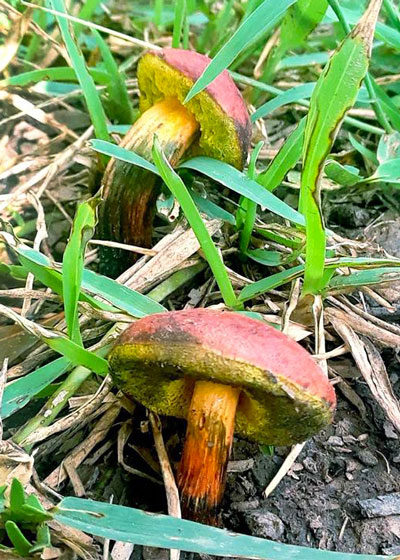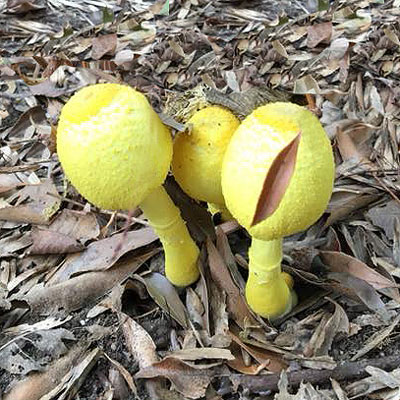Question of the Week – Number 2: September 27, 2018
“What is this mushroom? Is it edible?”

Lovely mushrooms in photo by P.M. posted to my Facebook page a few days ago.
On a side note: If you ever wondered what gray leaf spot looks like in St. Augustine, look at those exaggerated fungal areas on the blades between the mushrooms. Normally gray leaf spot runs its course by the end of August, but I’ve continued to get questions about it even as recently as this week. A fungicide might be in order. That would probably also stop the mushrooms.
Back to the mushrooms…
With all the rain much of Texas has received over the past several weeks, mushrooms have sprung up bountifully. Predictably, as in spring, 2015, questions about identifying them have been plentiful as well.
My answer has consistently been that only a trained mycologist should attempt to identify mushrooms. That’s a specific subset of botany that deals with lower plants including mushrooms and toadstools. Most of us who have horticulture degrees received very little training in the identification of mushrooms (other than perhaps the common cultivated types that are grown in very controlled conditions).

A cluster of mushrooms is about to pop open. Photo by Carolyn R.
My dad was a PhD botanist who worked with poisonous plants in the Range Science Department at Texas A&M. He taught me as a young child that some species of mushrooms are quickly deadly poisonous. That’s why I never apologize for not trying to identify mushrooms and whether or not they can be consumed safely. The liability is far too great. As for whether pets might be harmed by them, dogs and cats usually leave them alone. But if you’re concerned, you can break the mushrooms off with a hoe or rake, or you can drag a garden hose across them to pull them down.
As to whether mushrooms and toadstools damage your landscape plants, they almost never do. They are saprophytic plants that live off decaying organic matter, usually old roots and rotting grass clippings. They appear almost overnight, and they disappear almost as quickly.
